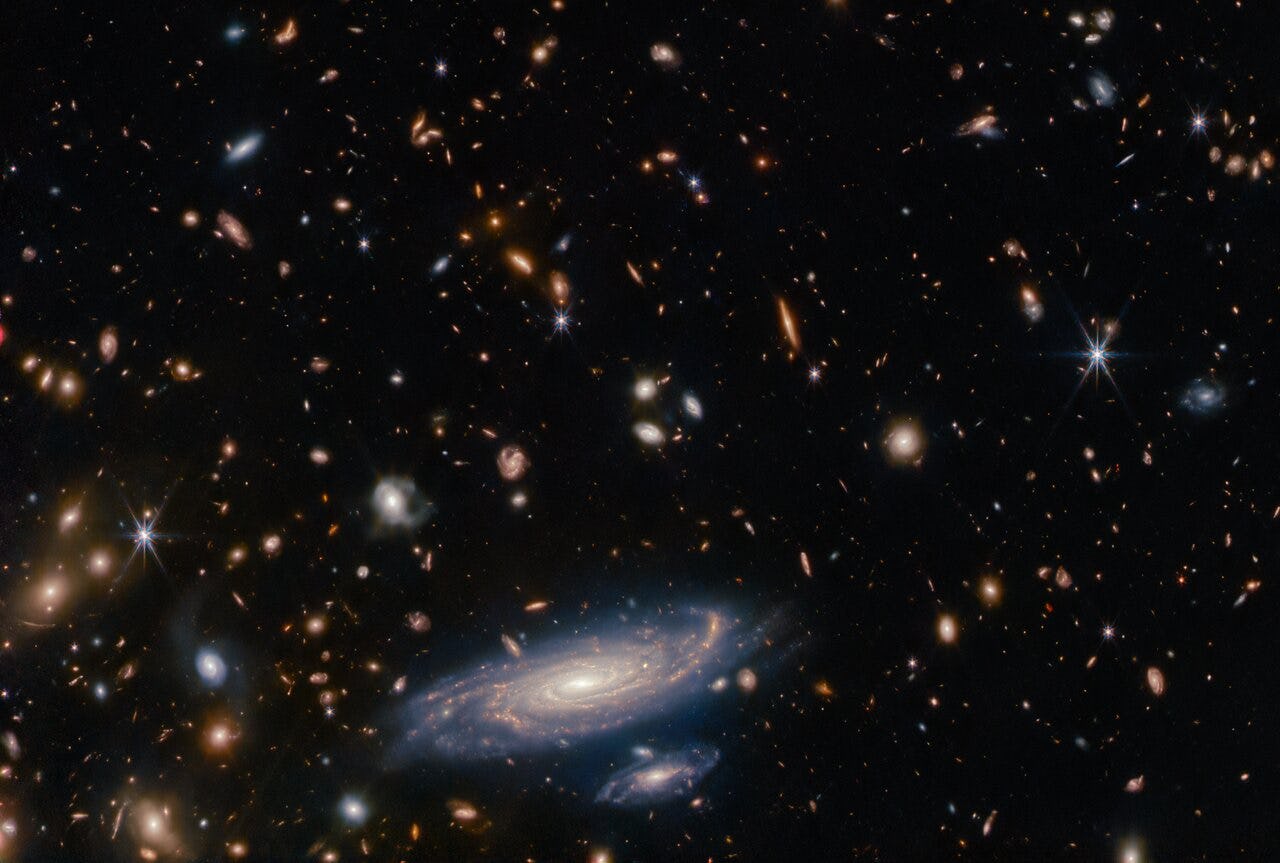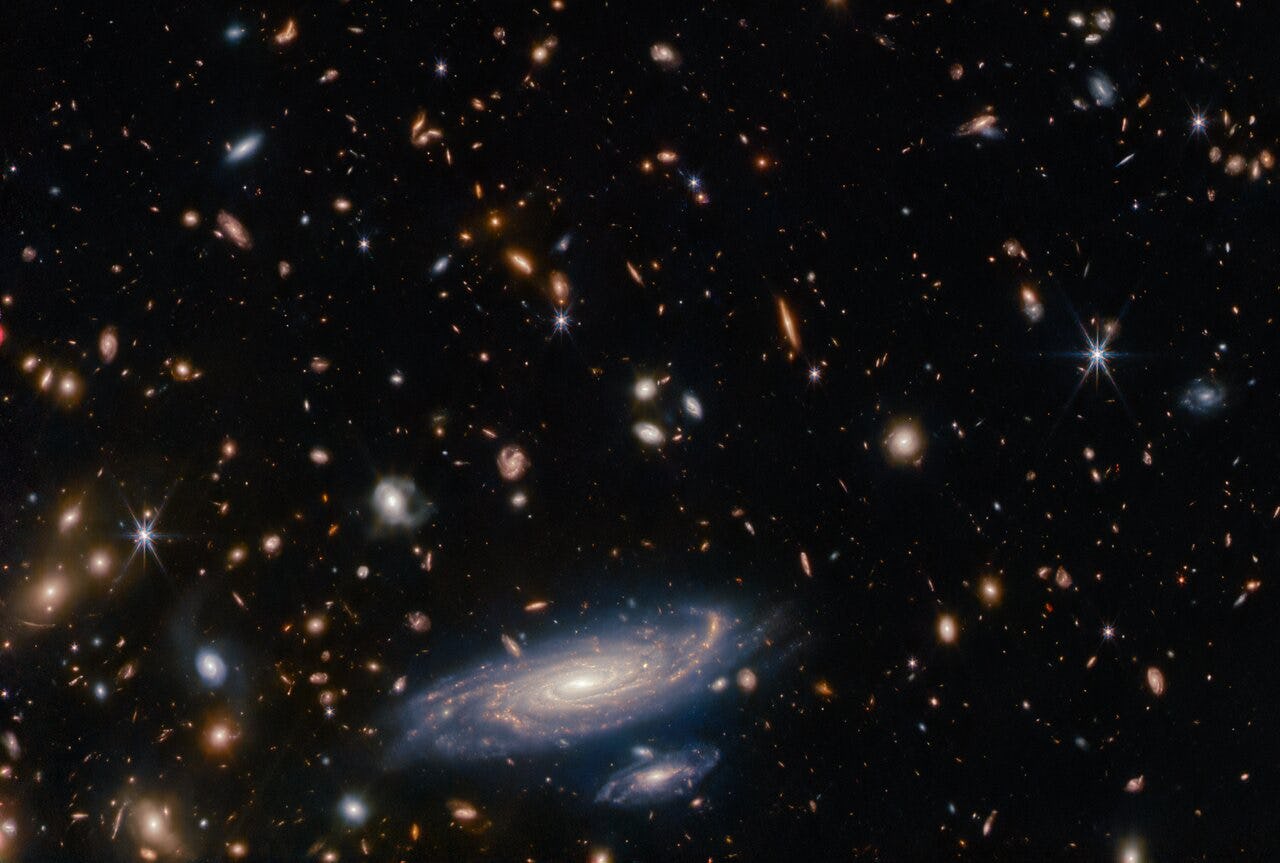
In this latest image from James Webb Space Telescope (JWST), we’re seeing spiral galaxy LEDA 2046648 as it looked while the first multicellular organisms were clumping themselves together here on Earth.
The spiral galaxy in the foreground of this latest image from JWST is a billion light years away; its light had to travel across space for a billion years to land on JWST’s mirrors last summer.
And the light from each of the thousands of galaxies in the background of this image — the tiny spirals, ovals, and oddly-shaped smudges of light that dot the blackness around LEDA 2046648 — is even older and reached JWST after an even longer journey across space.
One of JWST’s main science goals is to gather as much information as possible about the oldest galaxies in the universe. Astronomers want to understand how the first galaxies formed, what they looked like, and how they evolved into the large, complex shapes of the galaxies we see in the nearby universe today. In November 2022, a team of astronomers pointed out two mind-bogglingly ancient galaxies in JWST’s first image ever, a deep field view of the galaxy-studded universe. The two galaxies formed 350 million and 450 million years after the Big Bang, respectively, which makes them more than 13.5 billion years old – the oldest galaxies ever observed.
JWST is good at spotting very faint, very distant objects like ancient galaxies, because it views the universe in infrared light, whose wavelengths are slightly longer than the ones our unaided eyes can see. Light from distant objects, which are moving even farther away from us as the universe expands, gets stretched into those longer wavelengths.

Although this is the most recent image the JWST team has processed and released to the public, it was one of the first images the telescope actually took. During the early summer of 2022, astronomers and engineers were firing up Webb’s instruments and getting them ready to do real science observations. This stunning image of spiral galaxy LEDA 2046648 was part of the process of commissioning JWST’s Near-Infrared Imager and Slitless Spectrograph (which was recently out of order for two weeks thanks to a run-in with a cosmic ray).
“Calibration images such as this one were critical to verify the telescope’s capabilities as it was prepared for science operations, and this one doesn’t disappoint,” says the ESA in a statement.
During the commissioning process, JWST’s operators needed to test something called parallel observation, which allows NIRISS and the Near Infrared Camera (NIRCam) to observe two different targets at the same time.
“This allows astronomers to interpret and compare data from the two different instruments, and to characterize the performance of NIRISS,” says NASA in a statement.
So while NIRISS focused on a white dwarf called WD 1657+343, NIRCam captured this stunning image of spiral galaxy LEDA 2046648 – and thousands of other galaxies in the background.







